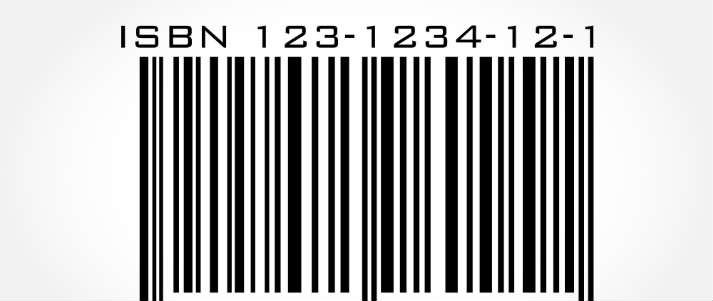Got an idea for an amazing book? We’ll show you how to get it published as an eBook that will actually make you cash!
 Self-publishing means publishing and selling your own book instead of relying on a literary agent or publishing company to do it for you. In return for doing all the donkey work, any profit you make is all yours.
Self-publishing means publishing and selling your own book instead of relying on a literary agent or publishing company to do it for you. In return for doing all the donkey work, any profit you make is all yours.
It might sound a bit intimidating, but it's actually a piece of cake. Getting an eBook out there is super easy, and once you've published it you'll be earning passive income for years.
So what does self-publishing involve and how long does it take? We'll take you through it all step-by-step.
 Before you can publish your eBook and start making money, there's just the small matter of having to write the book. Unfortunately, this is the part that takes some serious hard work and dedication – rush through it and you'll just end up with a rubbish book that no one wants to buy.
Before you can publish your eBook and start making money, there's just the small matter of having to write the book. Unfortunately, this is the part that takes some serious hard work and dedication – rush through it and you'll just end up with a rubbish book that no one wants to buy.
We'd recommend making a schedule to stick to, or you could end up spending years perfecting your masterpiece. More importantly, knowing when your book will hit the shelves gives you the best chance of maximising sales.
Divide your book into chapters, sections or anything else that makes the structure clear. Set yourself a deadline (be realistic!) and divide the number of headings by the number of weeks until then: that’s your weekly writing target. Stick to it.
Oh, and before you do anything you'll need to decide what publishing platform you're going to use – luckily we've got a guide to help you do just that!
Once you've found your platform, here's how to publish an eBook:
 ISBN stands for International Standard Book Number, a series of numbers (often used as a barcode on print books) that identify the title, author, publisher, format and price. It’s a bit like an ID card for books.
ISBN stands for International Standard Book Number, a series of numbers (often used as a barcode on print books) that identify the title, author, publisher, format and price. It’s a bit like an ID card for books.
If you want to sell your eBook in online stores, you need an ISBN – but how do you get one?
While you can save masses by buying in blocks of ten (£164), ISBNs are registered to just one publisher or individual, so you can't share them around or sell them on.
Although it isn't cheap, getting your own ISBN means you are listed as the publisher on any store that sells your book. Your publisher name (the 'imprint') can be anything – 'Your Name', 'Your Name Books' or something totally made-up, like 'The Awesome Press' (as long as no one else is using it).
Free ISBNs work in exactly the same way as the paid kind, with one exception: the platform is registered as the publisher, so their name will appear alongside your author name whenever the book’s listed.
Don’t worry – it doesn’t mean they have any rights over your content or what you do with it. Some platforms even state that you’re still publisher in the eyes of the law.
If the publisher name doesn’t bother you, and you want to get your book to market as fast and as cheaply as possible, stick with a free ISBN if it’s on offer!

Commercial publishers tout their upcoming titles as much as a year before the launch date. While you don’t need to be quite so eager, it’s always worth having some sort of game plan. Once you know when your book will be live, try to start your marketing campaign a month or two before.


Credit: Julia Tim – Shutterstock
It might sound a bit intimidating, but it's actually a piece of cake. Getting an eBook out there is super easy, and once you've published it you'll be earning passive income for years.
So what does self-publishing involve and how long does it take? We'll take you through it all step-by-step.
Looking for some book inspo? We really recommend having a read through these great books about money.
How to write an ebook

Credit: Universal Pictures
We'd recommend making a schedule to stick to, or you could end up spending years perfecting your masterpiece. More importantly, knowing when your book will hit the shelves gives you the best chance of maximising sales.
Divide your book into chapters, sections or anything else that makes the structure clear. Set yourself a deadline (be realistic!) and divide the number of headings by the number of weeks until then: that’s your weekly writing target. Stick to it.
4 steps to writing a book
- Write your first draft – We'd say this can take anything between three months and a year (or more!), depending on your other life commitments. Get your head down and focus on just getting the words on the page.
- Get feedback (allow two weeks) – Stop tinkering with your book and round up family members to read it instead. Or, go swapsies with someone super talented on an English course for an editorial critique. Not writing fiction? Go lurk in the relevant department to get a pro to give you feedback!
- Editing (at least two weeks) – Use the best feedback to buff your masterpiece to within an inch of its life. Make it shine.
- Proofreading (one week) – Glaring typos and inaccurate facts could cost you sales, so don’t skimp on this bit! If you can’t stretch to a professional editor, try and find someone on Fiverr. At the very least, give it to a couple of mates and ask them to be brutal. Don’t ask anyone who doesn't know their 'its' from their 'it's' or you'll be wasting your time.
How to publish an eBook
Actually publishing the book seems like the scary bit but, we promise you, it's pretty straightforward if you follow this guide.Oh, and before you do anything you'll need to decide what publishing platform you're going to use – luckily we've got a guide to help you do just that!
Once you've found your platform, here's how to publish an eBook:
Format your eBook
Begin with a clean document template and only set up the styles you want to use – for instance, 10-point, left-aligned, double-spaced Times New Roman for your main content, or bold, 22-point italic Helvetica for chapter headings. Then, instead of clicking bold, centre or underline wherever you feel like it, use your pre-defined styles. Credit: Denis Dervisevic - Flickr
Credit: Denis Dervisevic - Flickr
Whichever platform you go for, the free Smashwords style guide should be your formatting Bible: it explains in (lots of) detail how to set your book up for the fewest conversion headaches.
As for file types, .doc and .docx files are the most commonly accepted, but you don’t have to use Microsoft! Free alternatives like OpenOffice, LibreOffice, Google Docs – and anything else that lets you save your files with the right extension – all work fine.
Once you’ve uploaded and converted your book, always make sure to preview it on a few different eReaders and devices. If you spot any terrible typos or formatting errors, make the changes and upload a clean version.
The beauty of digital means you can even update your book’s content after it’s been published – but don’t use that as an excuse to send out typo-filled or poorly written/formatted content, as readers and reviewers won't be impressed.Make a book cover
Forget not judging a book by its cover, because that’s exactly what book buyers do, all the time! The good news is you don’t need to be Picasso to design something good – you just need to follow our common sense guidelines. Credit: PBS
Credit: PBS
How to design a book cover
• Check with the publishing platform for any guidelines on cover size or layout – and follow them to a T! Typically, you'll just need to supply something as a .jpg (image) file
• Have a look at the covers of best-selling eBooks to see what makes the good ones work – is it colour, image, font or something else?
• Make your title big, bold and easy to read (no squiggly fonts ) – it needs to be legible on even the tiniest mobile screen
• Your image should be eye-catching, work well with your title font/size, and should be appropriate for your book category
• Free image editing software like GIMP works just as well as the professional stuff
• Try sites like Unsplash to get your hands on top-quality, free-to-use photos
• If you buy images for your book, check how you're allowed to use them and whether you need to credit the photographer or illustrator
• If you’re not confident about having a go yourself, you can probably find someone on Fiverr to whip up a cover for you for… well, around a fiver
• Share your cover with select mates or family members and ask them to be utterly honest with you before you make your decision.Add your book details
Before you can release your book into the wild, you’ll need to add a few details about you and your content. Here’s the cheat sheet! Credit: Morakot Kawinchan – Shutterstock
Credit: Morakot Kawinchan – Shutterstock
Book title: Sounds obvious, but make sure your title is exactly the same as the one in your EPUB (a.k.a your eBook file) and on the front cover!
Author name: Yours (or whoever wrote the book).
Publisher name: This might be optional depending on whether you’re using a free or paid ISBN.
Rights: If you’ve written your own book from scratch this is usually pretty simple – you own all rights and can choose to sell your book anywhere in the world.
Language: Whichever language your book is written in.
Dodgy content: Some platforms will ask you to declare if you’ve written something that contains graphic sex, violence or drug use (and there’s not much point lying about it!).
Description: This is the bit of blurb that readers see when they browse your book (and consider buying it). Make it really, really good!
Category: You may be able to choose from broad categories like Fiction or Non-Fiction, or drill down to something super specific like Fiction > Science Fiction > Space Operas. Consider picking less popular (but still appropriate) categories for your book to increase its chances of being spotted among the competition!
Keywords: Keywords give you the chance to be discovered by readers searching for books like yours. They can be words like 'thriller' or 'romance', or even phrases. Top tip: find a book in the store that you’ll be in competition with and use similar keywords.
Price: Some platforms let you tailor your book’s price for each country they sell to. If you’re not sure, just stick with one price and let the platform work it out for you.Choose a publication date
Most of the time this is just whatever date you upload or publish your book. Some platforms now let you pick a date months in advance, too – what’s that about? Credit: Chutima Chaochaiya - Shutterstock
Credit: Chutima Chaochaiya - Shutterstock
Commercial publishers announce (and market the bejeezus out of) their books before they go on sale to generate advance sales and reviews, or lots of sales the day the book goes live.
Setting an advance publication date means customers can see your book in the store – and pre-order it – immediately, but they’ll only be able to download and read on the day it goes live.Publish your eBook

Your book won’t be available to buy until you make it live – so don’t forget to hit the ‘Publish’ button!
If you change your mind later on, unpublishing your book is simply a case of making it not-live; that means it reverts to draft status and will stop appearing in online book stores.
How long it takes for your book to start appearing on virtual bookshelves (or, if you unpublish, to disappear) depends on the platform. For some, it’s a matter of hours, while others can take weeks.
Do you need an ISBN for eBooks?

Credit: Atstock Productions – Shutterstock
If you want to sell your eBook in online stores, you need an ISBN – but how do you get one?
How to buy an ISBN
ISBNs aren’t cheap. Nielsen, the UK’s ISBN agency, sells a single ISBN (for just one book) for £89. Yup: £89!While you can save masses by buying in blocks of ten (£164), ISBNs are registered to just one publisher or individual, so you can't share them around or sell them on.
Although it isn't cheap, getting your own ISBN means you are listed as the publisher on any store that sells your book. Your publisher name (the 'imprint') can be anything – 'Your Name', 'Your Name Books' or something totally made-up, like 'The Awesome Press' (as long as no one else is using it).
How to get a free ISBN
Some publishing platforms give you an ISBN for free. Yippee!Free ISBNs work in exactly the same way as the paid kind, with one exception: the platform is registered as the publisher, so their name will appear alongside your author name whenever the book’s listed.
Don’t worry – it doesn’t mean they have any rights over your content or what you do with it. Some platforms even state that you’re still publisher in the eyes of the law.
If the publisher name doesn’t bother you, and you want to get your book to market as fast and as cheaply as possible, stick with a free ISBN if it’s on offer!
Technically, you need a new ISBN for each format your book is available in (audio, print, translations). You may also need a new ISBN if you make drastic changes to the content or cover of your book after it’s published. Check the regs with your publishing platform or the ISBN agency!
How to sell your eBook

Commercial publishers tout their upcoming titles as much as a year before the launch date. While you don’t need to be quite so eager, it’s always worth having some sort of game plan. Once you know when your book will be live, try to start your marketing campaign a month or two before.
Marketing your eBook
- Set-up a website for your book along with Facebook, Twitter and Instagram accounts. Use them to keep followers interested in you and your book’s progress, and to reach out to reviewers
- Enter your book or other writing in competitions – but give avoid any that ask for massive entry fees. There are plenty of free comps with big prizes and/or kudos on offer: have a look at BookTrust or get Googling
- Get an author profile on Goodreads. It’s free, and you can use it to list your book, host a Q&A and get advice from other writers
- Published a kids’ book? Contact schools or libraries and offer to do readings. If you’ve written a book about running, riding or wrestling, send your book notice to sports magazines or gyms
- Contact book clubs online or in your local area and offer to do a reading, interview or author Q&A
How to get good reviews for your eBook

Credit: NBC
- Get to know reviewers. Read their other reviews and follow their instructions for submitting books.
- Write a book notice: an A4 piece of paper that lists your main book details: title, author, publisher, price, publication date, and your book’s blurb and cover, along with your contact details
- Send your book notice to people who read (and talk about) your genre of book. Try local or national newspaper journalists, book bloggers and YouTube channels. Or search the mammoth list of independent reviewers over at theindieview.com – and think globally, too!
- Download a copy of your converted eBook (or save it as a PDF) to send out if reviewers ask to read your book. While most reviewers won’t expect fully polished books, don’t send out anything which is poorly formatted and full of typos (unless you want that to feature in your review!). Add a disclaimer if you need to: “This edition is a review copy – some content may be subject to change before publication.”
- If you get any particularly juicy praise from early reviews, add them to your book’s detail page, or incorporate them into the description. Some writers even update their books with a page featuring the best quotes
- Got an interesting story about publishing your book? Write a press release and send it to newspapers, magazines and TV or radio stations. If you live in a small town, just the fact that you’ve written a book could be enough to get some coverage
- Submit your book for a free review at Booklife.com. They only accept a handful of the hundreds of submissions they get, but nabbing one gives you plenty of credibility (and possibly an inclusion in leading US trade mag Publisher’s Weekly).
- As tempting as it might be, don’t reply to customer reviews. If it’s glowing, five-star praise, just bask in feeling fantastic. If it’s not … well, don’t lose any sleep over it! Negative reviews won’t kill your book – although if you find yourself getting several, see if there’s something you’ve missed.
Be wary of paying for reviews. Some stores, including Amazon, have been known to remove paid reviews and/or the book in question. Amazon can even block reviews from people you know (we don’t know how they know, we only know it’s freaky!).
How much money can you actually make from eBooks? We've got the lowdown on how much self-publishing costs and how much you can earn. 






0 Comments